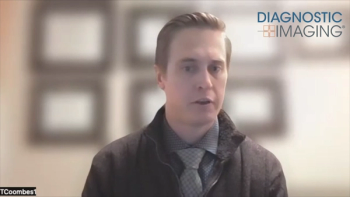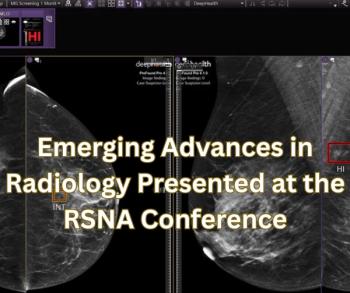
MRI and MR Arthroscopy Useful for Unstable Labral Tears
MRI and arthroscopy can help surgeons screen for unstable labral tears.
Unenhanced MRI and MR arthrography of the shoulder helps detect unstable labral tears, according to a study published in the
Researchers from the NeuroSkeletal Imaging Institute in Merritt Island, FL, and the University omf Central Florida School of Medicine in Orlando retrospectively reviewed 150 consecutive unenhanced shoulder MRI and MR arthrography examinations to determine the comparative benefits of using the screening to detect unstable labral tears.
Nineteen women and 131 men had each undergone both MRI and MR arthrography the same day. Two musculoskeletal radiologists retrospectively reviewed the images, assessing labral tears and determining if there was any difference in position of the labral tear between unenhanced MR images and MR arthrograms. A tear was considered to be unstable if there was a change in position of at least 4 mm between the two images. All patients went on to undergo arthroscopy.
The results showed that of the 150 patients, 94 had superior labral anterior-to-posterior (SLAP) tears, 53 had posterior labral tears, and 42 had anterior labral tears on MRI. All lesions described on MRI were described on arthroscopy.[[{"type":"media","view_mode":"media_crop","fid":"44364","attributes":{"alt":"Musculoskeletal imaging","class":"media-image media-image-right","id":"media_crop_3941386333662","media_crop_h":"0","media_crop_image_style":"-1","media_crop_instance":"4949","media_crop_rotate":"0","media_crop_scale_h":"0","media_crop_scale_w":"0","media_crop_w":"0","media_crop_x":"0","media_crop_y":"0","style":"height: 175px; width: 175px; border-width: 0px; border-style: solid; margin: 1px; float: right;","title":"©decade3d - anatomy online/Shutterstock.com","typeof":"foaf:Image"}}]]
“Twenty-three SLAP tears, 16 posterior labral tears, and 17 anterior labral tears showed a change in the position of the labral tear when comparing unenhanced MR images versus MR arthrograms of 4 mm or more,” the authors wrote. “All of these labral tears were considered unstable by the surgeon, and all of these patients had surgical tacking performed. The other labral tears showed motion on unenhanced MR images and MR arthrograms of less than 4 mm. All of these tears except for three were considered stable on arthroscopic examination.”
Five SLAP tears, three anterior labral tears, and four posterior labral tears were seen on arthroscopy that were not seen on unenhanced MRI or MR arthrography. The tears not seen on unenhanced MRI or MR arthrography were considered stable at arthroscopy.
The researchers concluded that unenhanced MRI and MR arthrography was useful in surgical planning of patients with unstable labral tears.
Newsletter
Stay at the forefront of radiology with the Diagnostic Imaging newsletter, delivering the latest news, clinical insights, and imaging advancements for today’s radiologists.




























